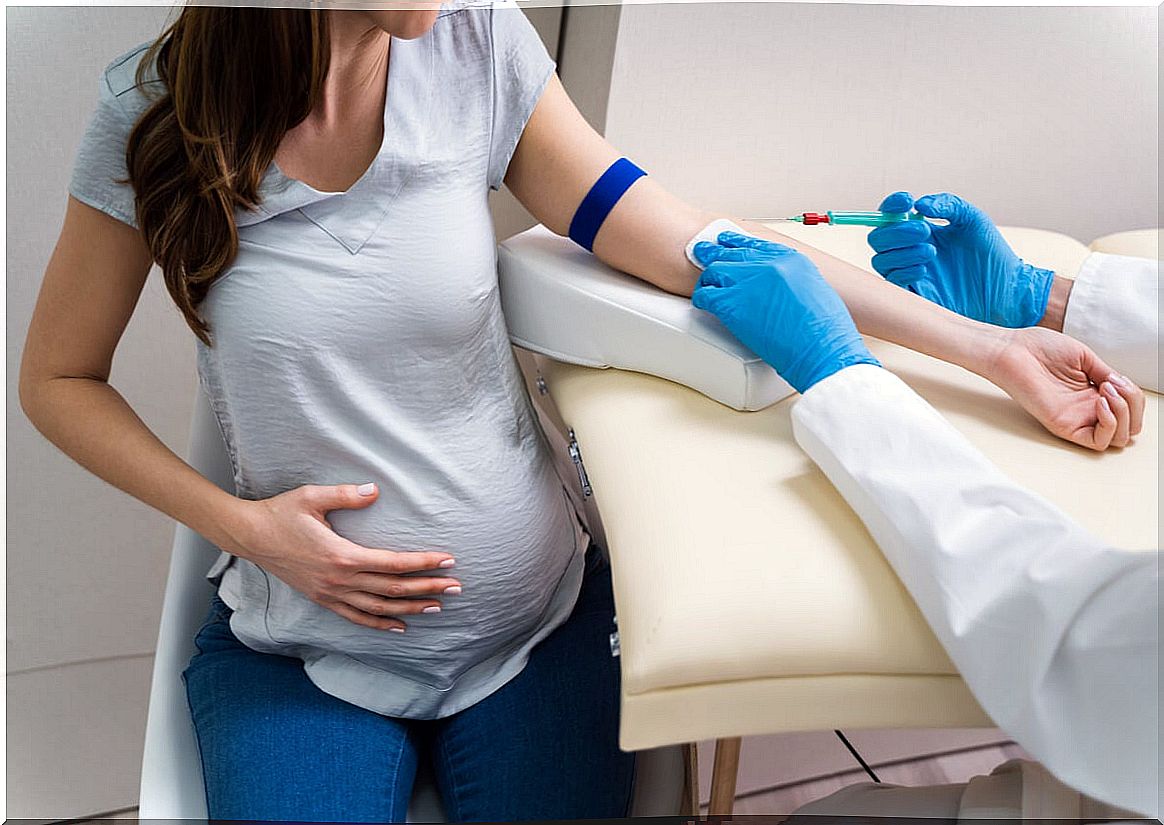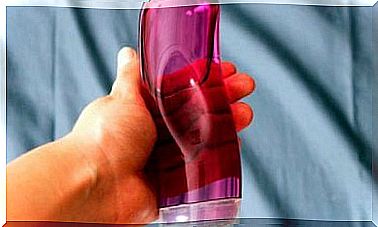What Is Cholestasis Of Pregnancy And What Are Its Symptoms?
Cholestasis of pregnancy, also known as gestational intrahepatic cholestasis (ICP) is a liver disease that is only experienced in the gestational period. In most populations, the incidence is highly variable, but ranges from 1 case per 300 to 2000 inhabitants.
Fortunately, this pathology is reversed after giving birth in sick women. In any case, as we will see in later lines, there is an enormous relapse rate if the patient becomes pregnant again, with a much worse etiology and prognosis.
What is cholestasis of pregnancy?
Cholestasis of pregnancy is a disease that affects the liver of pregnant women, especially from the third trimester of pregnancy. As indicated by the Cedars Sinai portal , in this clinical picture the flow of bile from the gallbladder to the small intestine is impeded or impeded.
The gallbladder is located just below the liver and bile itself is synthesized in it, so it is therefore considered a disease of an intrahepatic nature. Bile is produced continuously in the liver and in interdigestive periods it is stored in the gallbladder. The gallbladder concentrates and stores it, but it is not responsible for synthesizing it.
The incidence is estimated to be 1-2 pregnancies per 1000 pregnant women, but there seems to be a clear genetic predisposition. For example, women of Latino ethnicities have a 5% probability of developing cholestasis during pregnancy, while in native women of Andean populations the risk increases to 25%.
According to the Journal of Clinical Medicine, in North America and Australia the respective incidences are 1 and 2% of all pregnant women. The chances of developing this pathology increase with subsequent pregnancies.
Symptoms of cholestasis of pregnancy
As the Mayo Clinic indicates , the main symptom of cholestasis of pregnancy is very evident itching in pregnant women, without rashes. In general, this unpleasant itch appears in the second or third trimester (about 30 weeks), being more evident on the palms of the hands and feet.
In addition, up to 15% of affected women may have mild jaundice. It consists of a slight yellow color of the skin, which is more evident in the whites of the eyes. This sign denotes that the bile is not being synthesized or eliminated correctly.
Bile contains significant amounts of bilirubin, a yellowish pigment that comes from the degeneration of hemoglobin in degraded red blood cells. As it cannot be eliminated, it accumulates in the tissues, at a minimum concentration of 2.5 milligrams per deciliter to change its color.
According to the Statpearls portal , the prevalence of jaundice in patients is higher, since it could reach 25% of sick pregnant women. In addition, it is estimated that it usually develops 1-4 weeks after the onset of the itch.

Other less common symptoms
As we have said, itchy palms and feet (especially at night) and mild jaundice are the most common signs. Among other rare but noteworthy signs, we can highlight the following:
- Pale stools: bilirubin is secreted with bile into the small intestine. In addition to helping digestion, it also gives stool its typical brown color. Therefore, an increase in the body can manifest itself with paler stools.
- Nausea, anorexia, and fatigue.
- Pain in the upper right quadrant of the abdomen: this symptom is not accidental, since the liver is located in this area, just below the rib cage.
- Dark urine: this sign is associated with conditions such as hepatitis, since dark urine appears when waste substances are not properly metabolized.
What Causes Cholestasis of Pregnancy?
Unfortunately, the etiology of this disease has not yet been fully described. Even so, the aforementioned media focus their attention on the genetics, hormones and environment of pregnant women.
1. Genetics
The higher prevalence in some ethnic groups and the apparent heritability of the condition places genetics as the first predisposing factor, according to the Annals of Hepatology. The mutations in the ABCB4 gene (which encodes the MD3 protein), present in 16% of the patients analyzed, are striking.
Other genes that could be involved are the following: BSEP, FIC1 and FXR. It is enough to know that these encode, in one way or another, the process of excretion and synthesis of bile.
2. Hormones
Sources already cited postulate that estrogens are closely linked to cholestasis. It does not seem to be a coincidence that almost all cases develop in the third trimester, when the levels of these hormones peak.
In addition, the prevalence in pregnant women with twins is 5 times higher, since they produce more estrogens in pregnancy.
3. Environmental factors
There is a clear seasonal and regional trend when it comes to cholestasis of pregnancy. However, possible environmental triggers have not yet been found in genetically predisposed people.
Possible complications and prognosis
The prognosis of the mother is positive, since the cholestasis disappears with the delivery. However, recent studies have linked it to an increased risk of stones, non-alcoholic liver cirrhosis and hepatitis C after its disappearance.
On the other hand, this pathology does pose a certain risk to the fetus. In general, cholestasis favors the child being born early, something that has been contrasted in multiple sample groups. The most feared effect, fetal death, only occurs in 1-2% of pregnant women with cholestasis.
Diagnosis
The main diagnostic vehicle is the registry of typical symptoms, paying special attention to the generalized itch and the moment of its appearance. In any case, the parameter that measures liver stress is the total serum bile acids test (TABST). As the Cochrane Library indicates , this technique may report flaws, but it is the most widespread.
The total non-pathological level of serum bile acids is 10 micromoles per liter of plasma (mmol / L). When this value ranges from 10 to 14 mmol / L, the patient is considered to have cholestasis of pregnancy. Mild jaundice (yellow skin) can also significantly speed up the diagnosis.

Treatment of cholestasis of pregnancy
Once the clinical picture has been detected, it is necessary to start treatment immediately. Although the life of the mother is not usually in danger, the fetus is more vulnerable, so the administration of medication is essential in all cases.
In all patients, the treatment of choice is ursodeoxycholic acid (UDCA), since it helps to reduce the levels of bile in the blood. It begins with a single dose of 300 milligrams a day, which can be increased up to three times in several doses.
Although the mechanism of action of ursodeoxycholic acid is not known, it has been found that it improves symptoms in patients and does not have any harmful effect on the fetus. UDCA is associated with a reduction in itchiness, a lower risk of premature birth and a lower probability of fetal death.
If these drugs do not work, professionals turn to cholestyramine or methionine, which help the excretion of bile salts.
Increased risk in successive exploits
As you have seen, gestational intrahepatic cholestasis is a common clinical entity in pregnant women and, unfortunately, unknown. It is not yet known what causes it or how to avoid its appearance, but it is increasingly associated with genetic and hormonal factors.
What has been recorded is that, if a woman suffers from cholestasis during pregnancy, the chances of recurrence and fetal death or maternal damage are higher in subsequent pregnancies. Therefore, if you are a woman who has already passed this pathology, we recommend that you go to a doctor or a family planning center if you plan to get pregnant again.








